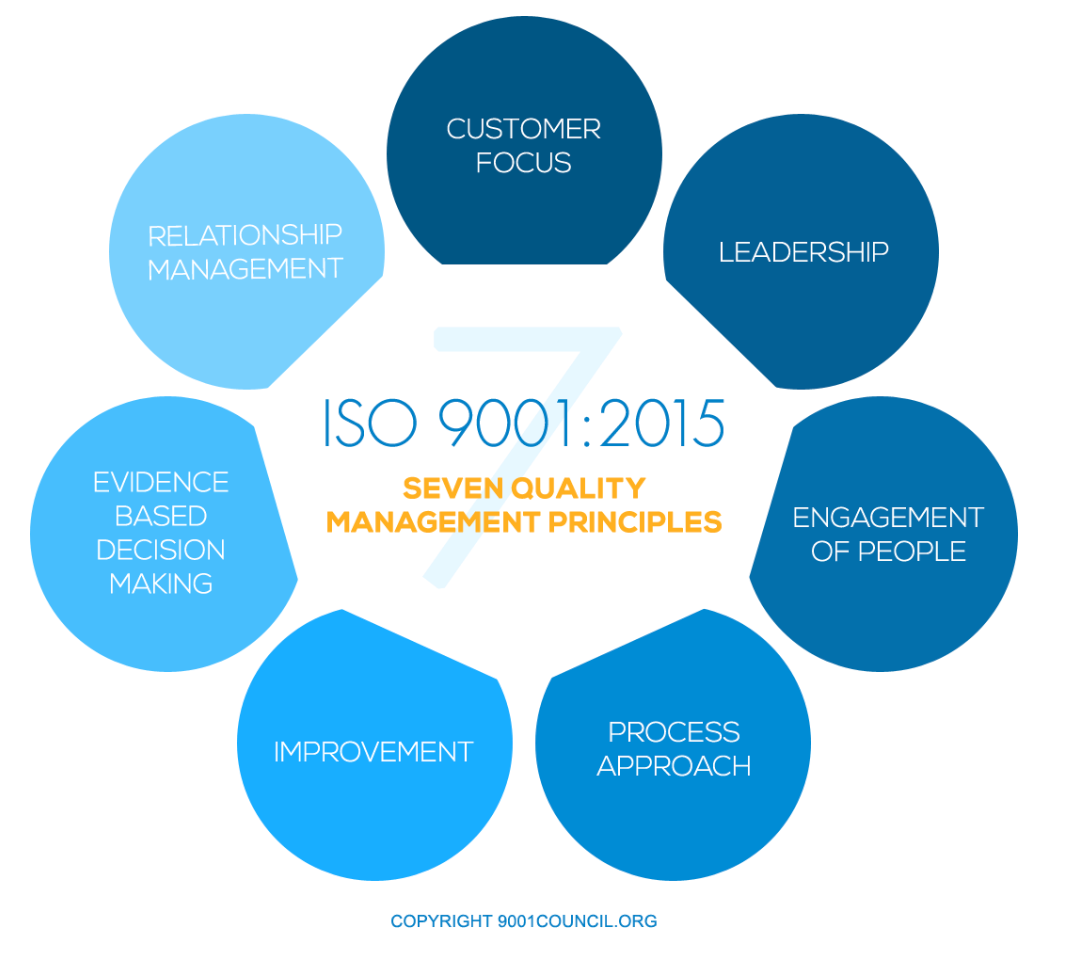ealth care organizations utilize accreditation programs to provide a framework for meeting standards of care and to improve patient safety and quality outcomes. But what are those standards and how do we meet them?
At the University of Utah Health Hospitals and Clinics, we apply ISO-9001 standards in everyday work to help bridge common goals and provide consistent, high-quality, and safe patient care across our health system. This commitment is in accordance with accreditation and our drive for excellence in quality.
ISO Mission:
Make lives easier, safer and better – for everyone, everywhere.
Learn more here.
What is it?
ISO-9001, published by the International Organization for Standardization, sets quality management requirements. Widely adopted globally, over a million organizations utilize ISO-9001 in their daily operations. Initially designed for manufacturing, these standards are now applicable across industries, fostering process establishment, enhancement, and a culture of continuous improvement. DNV's NIAHO (National Integrated Accreditation for Healthcare Organizations) program aligns ISO standards with healthcare practices, conducting annual surveys that integrate both frameworks seamlessly.
Why do we do it?
ISO-9001 provides a framework for our already process-driven organization. Collaborating with DNV aligns seamlessly with our organization's vision and values, offering a structured foundation for ongoing improvement through risk-based thinking. Choosing certification over mere compliance, the University of Utah Health Hospitals and Clinics adopts these standards to guarantee a consistent delivery of excellence in quality throughout our health system.
How do we apply it in our daily work?
ISO-9001 is based on Plan-Do-Check-Act (PDCA) methodology and embraces seven principles of quality management:

-
Customer Focus – our patients, families, and communities we serve
-
Leadership – leaders promote and exemplify organizational excellence
-
Engagement of People – our teams participate, contribute their knowledge, and elevate their practice
-
Process Approach – our processes and practices align with our organization’s strategy
-
Improvement – innovation and improvement are embedded in our culture
-
Evidence-Based Decision Making – we make data-informed decisions
-
Relationship Management – establishing and maintaining relationships with our patients and partners
The approach to structure embraces a comprehensive framework to assess, monitor, and drive quality and process improvements across the organization. It prioritizes standardizing processes wherever feasible, establishing a singular repository for policies and procedures, and integrating these principles into our daily operations.
We ask questions like:
If I’m making a change in my process:
- Who will be impacted by this change either upstream or downstream from where the change is made?
- Where and how will I communicate this: unit/clinic, department, or across the system?
- How will I know if this change has made a difference and made it easier for our teams to do the right thing?
- Where will we document this change so everyone has the latest process and procedure to reference?
The pursuit of everyday excellence
ISO-9001 fosters growth, efficiency, and heightened team performance, contributing to enhanced patient satisfaction throughout our health system. As a highly process-driven and solution-oriented organization, we continually reassess our practices. While our quick and effective problem-solving in emergent situations is a recognized strength, ISO-9001 plays a crucial role in refining our improvement processes systematically. It is imperative to integrate these standards into our culture, reminding ourselves to step back and apply them to our decision-making in all situations, be they emergent or not.
Sandi Gulbransen
Kemper Funk
In an organization as big as U of U Health, it’s hard to know where our work fits into the big picture. System Planning Manager Cassandra Taft highlights five ways teams can meaningfully contribute to Operational Plan priorities, regardless of job role or responsibility.
Chief Quality Officer Sandi Gulbransen and Accreditation Manager Kemper Funk provide insight on our partnership with DNV, how accreditation contributes to the safety of our patients and staff, and what to expect during our upcoming evaluation.
What is “Value Management” and why should you care? It's how University of Utah Health systematically improves the quality of care delivered to patients—and its never been more important as we redesign care during a pandemic. Chief Quality Officer Sandi Gulbransen shares the seven tenets of Value Management that guide our work.
